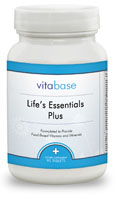Vitamin K1 is a yellow viscous oil, soluble in ethanol, hexane, chloroform and vegetable oils. Vitamin K1 was named phylloquinone
since it is an indirect product of photosynthesis in plant leaves where it occurs in chloroplasts and participates in the overall photosynthetic process. Vitamin K is found in two forms in nature: phytonadione or vitamin K1 which is found in plants and menaquinone or vitamin K2 which can be synthesized by many bacteria.
Phytonadione is required for the normal clotting of the blood. Vitamin K is essential in blood clotting and if it were absent, a small cut would cause continuous bleeding in the body to the point of death. The process of blood clotting begins automatically when a tear in a blood vessel is present. When a tear in a blood vessel is present, a collection of molecules assemble rapidly to form a blood clot. Vitamin K1 (phylloquinone) helps synthesize proteins the body needs to form bone.
Phytonadione is present in a number of dietary sources. Phylloquinone is abundant in green vegetables but poorly represented in fruits except avocado and kiwi. Grain products have also very low levels of vitamin K1. Animal products including eggs do not appear to contain appreciable amounts of vitamin K1 and less than 10 ng/g are found in fish and shellfish. High amounts are found in butter but lower amounts in cheese. Vitamin K1 is sensitive to sunlight (destroyed after one hour), unaffected by diluted acids but destroyed by basic solution and transformed by reducing agents.
|  Life Essentials Plus offers a broad spectrum of vitamins, minerals, antioxidants and other natural ingredients in one complete formula. This combination allows the micronutrients to work together synergistically improving absorption and assimilation. This formula contains natural and herbal supplements not found in most multivitamin formulas. These supplements work with a variety of bodily functions to support total health. If you are seeking a complete nutritional supplement to support good, overall health, look no further than Vitabase's Life Essentials.
Life Essentials Plus offers a broad spectrum of vitamins, minerals, antioxidants and other natural ingredients in one complete formula. This combination allows the micronutrients to work together synergistically improving absorption and assimilation. This formula contains natural and herbal supplements not found in most multivitamin formulas. These supplements work with a variety of bodily functions to support total health. If you are seeking a complete nutritional supplement to support good, overall health, look no further than Vitabase's Life Essentials.